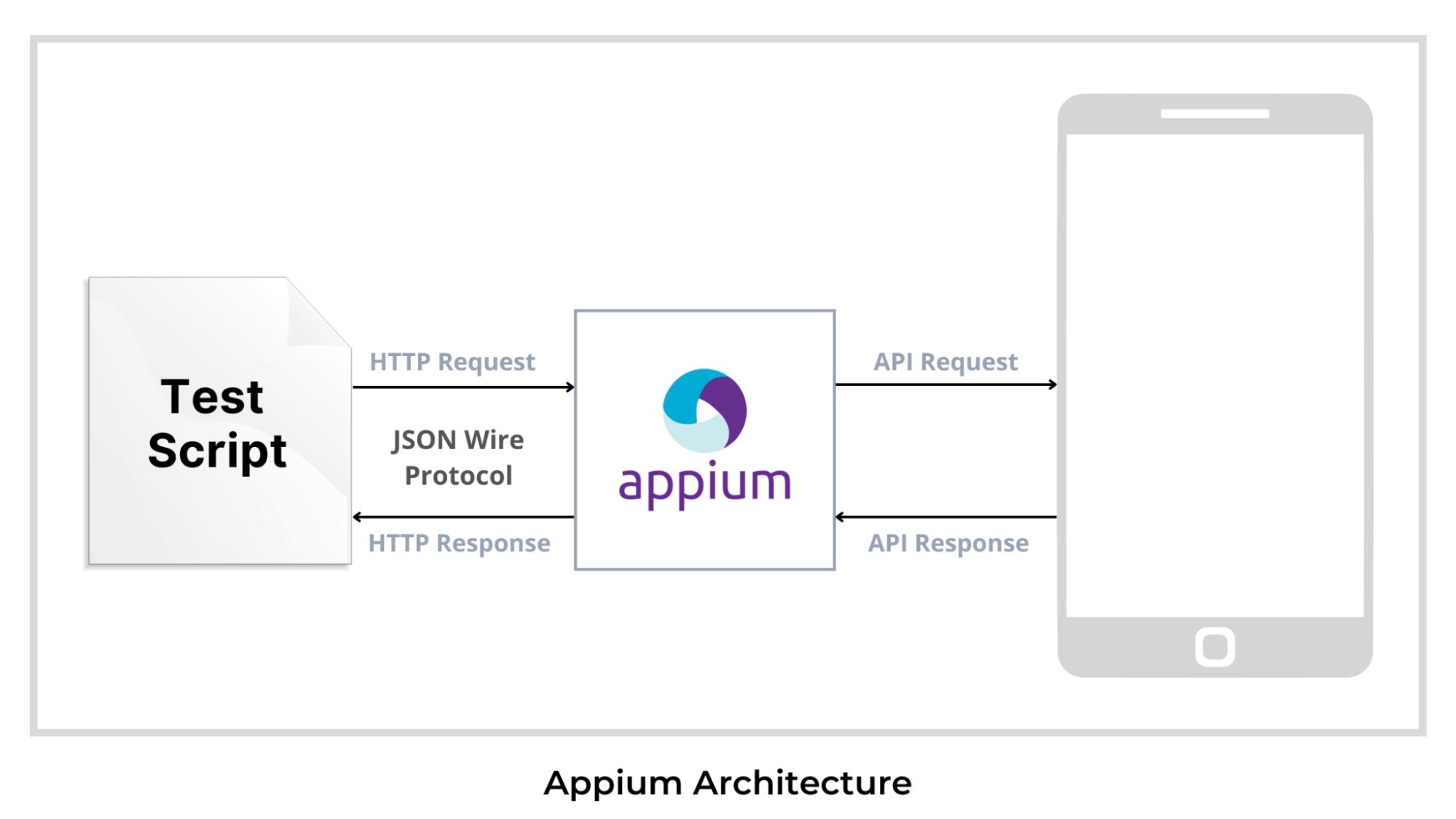Appium is a widely used open-source tool that allows you to automate the testing of mobile applications on both Android and iOS platforms. It provides a unified API to interact with native, hybrid, and mobile web applications, making it an invaluable resource for mobile app testers.
On the other hand, Cucumber is a popular BDD framework that enables collaboration between technical and non-technical team members, as it uses plain-text scenarios to describe the behavior of a software system. With Cucumber, you can write test scenarios in a language that everyone can understand, bridging the gap between developers, testers, and other stakeholders.
Now, when you combine Appium and Cucumber, you get a robust solution for BDD testing of mobile applications. This integration allows you to create test scripts that are not only automated but also written in a human-readable format, making it easier for team members to collaborate and understand the test cases.
In this tutorial, we will walk you through the steps of setting up and using Appium and Cucumber together, harnessing the best of both worlds for efficient mobile app testing.
What is Appium?
Appium is an open-source automation testing framework designed for automating mobile applications. It is particularly focused on mobile app testing and supports multiple platforms, including iOS, Android, and Windows. Appium allows developers and testers to write automated test scripts that interact with and test the functionality of mobile applications.

Key features and characteristics of Appium include:
1. Cross-Platform Compatibility
Appium is platform-agnostic, which means you can use the same test scripts to automate testing on different mobile platforms, such as iOS and Android, without major modifications.
2. Native, Hybrid, and Mobile Web Applications
Appium supports testing of native mobile apps (those built specifically for a single platform), hybrid apps (which combine web and native elements), and mobile web applications, making it a versatile tool for various types of mobile app testing.
3. Multiple Programming Languages
Appium allows you to write test scripts in multiple programming languages, including Java, Python, Ruby, JavaScript, and C#. This flexibility makes it accessible to a wide range of developers.
4. Real Devices and Emulators/Simulators
You can use Appium to test mobile apps on real devices, emulators, or simulators, providing a range of testing options to suit your needs.
5. Open-Source and Active Community
Appium is an open-source project with an active community of contributors and users. This means it’s continuously evolving and improving, and there are ample resources and support available.
6. Automation of User Interactions
Appium allows you to automate user interactions with the app, such as tapping buttons, swiping, entering text, and verifying app behavior, making it suitable for both functional and UI testing.
7. Integration with BDD Tools
Appium is often used in conjunction with Behavior-Driven Development (BDD) tools like Cucumber, enabling the creation of human-readable, scenario-based test scripts.
Appium is a popular choice for mobile app testing because it offers a flexible, cross-platform solution that can be seamlessly integrated into your testing workflow. It simplifies the process of automating mobile app testing, helping ensure the quality and reliability of mobile applications across different platforms and device configurations.
What is Behavior Driven Development?
BDD, or Behavior-Driven Development, is a software development methodology that focuses on improving collaboration among developers, testers, and non-technical stakeholders, such as product owners, business analysts, and quality assurance teams. BDD is an extension of Test-Driven Development (TDD) and emphasizes the behavior of a software application from the end-user’s perspective. The primary goals of BDD are to enhance communication, reduce misunderstandings, and produce high-quality software that meets user expectations.
Key components and principles of BDD include:
- Human-Readable Language: BDD encourages the use of plain and human-readable language to describe the expected behavior of the software. This language is typically written in the form of scenarios or examples that describe how the system should work in specific situations.
- Feature Files: In BDD, software features are often documented in “feature files.” These files use a specific format, such as Gherkin, to outline feature descriptions and associated scenarios. Gherkin is a structured language that uses keywords like “Given,” “When,” and “Then” to define the context, actions, and expected outcomes of a feature.
- Collaboration: BDD promotes collaboration between different team members, including developers, testers, product owners, and business analysts. By using a common, human-readable language, teams can ensure a shared understanding of the software’s behavior and requirements.
- Automation: While BDD scenarios are written in human-readable language, they can be automated using BDD frameworks and tools. These tools, like Cucumber, SpecFlow, or Behave, allow teams to translate feature descriptions into executable tests. The automation ensures that the software functions as specified in the scenarios.
- Continuous Feedback: BDD encourages ongoing collaboration and feedback throughout the development process. Teams can use BDD scenarios to validate the software’s behavior, identify issues early in the development cycle, and make necessary adjustments.
What is Gherkin?
Gherkin syntax in Cucumber helps us clearly explain how our software should work according to what our stakeholders want. When creating test scenarios with Gherkin, it’s important to understand some basic keywords:
- Feature: Describes what a specific part of the software does.
- Scenario: Shows a particular situation and what should happen in it.
- Given: Sets the initial state or context.
- When: Describes an action or interaction.
- Then: Tells us the expected result or outcome.
- And, But: These words can be used to add more details to the Given, When, or Then parts of a scenario.
What is Cucumber?
Cucumber is a testing framework that utilizes the Behavior-Driven Development (BDD) methodology, aiming to bridge the gap between technical and non-technical members of a software team.
Advantages of Using Cucumber:
- Open-source, easily maintainable, and scalable.
- Utilizes simple and user-friendly Gherkin syntax.
- Helps business stakeholders who are not proficient in code to understand and participate.
How Does Cucumber Work?
Cucumber interprets your specifications from plain-language text files referred to as “features.” It identifies scenarios for testing and executes them within your system. Each scenario is executed as a series of steps. Feature files must adhere to the fundamental syntax rule known as Gherkin. Cucumber links feature files with step definitions, which translate the business-readable language of each step into executable code.
Code of a sample feature file used in Cucumber:
@homePage
Feature: Verify General Store Page
@verifyRedirection @regression
Scenario: Verify User Redirection to Shopping Page
Given User is on the General Store page
When User selects “<country>”, enters “<name>”, chooses “<gender>”, and clicks “Let’s Shop”
Then User should be redirected to the products page
Examples:
| country | name | gender |
| India | Nisha | Female |
Why Perform Appium and Cucumber Testing on Cloud
Appium and Cucumber can be seamlessly combined for cloud-based testing of your iOS and Android mobile applications. Employing different cloud testing platforms, you can ensure comprehensive testing. Using a real device cloud is vital to verify that your application functions as anticipated for end-users.
With the multitude of devices and operating system configurations available today, conventional testing approaches have become arduous and time-intensive. Cloud testing platforms offer a solution by granting access to a diverse array of real devices in a scalable cloud environment. This accessibility streamlines the acquisition of necessary testing infrastructure for executing tests efficiently.
LambdaTest, an AI-powered test orchestration and execution platform, delivers dependable, scalable, secure, and high-performance capabilities when conducting Appium Cucumber tests. This platform accelerates release cycles for development and testing teams by granting them access to a cloud environment comprising more than 3000 authentic iOS and Android devices, streamlining the automation of mobile app testing.
Benefits of Appium Cucumber Testing on LambdaTest:
- Testing on a vast array of real devices.
- Leveraging a cloud testing platform can significantly expedite test execution.
- These platforms offer access to the most up-to-date device selection for testing purposes.
Process of Appium and Cucumber Integration
Here are the following process used for Appium and Cucumber integration:
- Writing Feature Files: In the BDD testing approach, feature files serve as the test scripts. These files are written in Gherkin syntax and contain scenarios that describe the expected application behavior. For mobile app testing with Appium, feature files will define steps related to user interactions and verifications.
- Glue Code Implementation: To make Cucumber and Appium work together, you need to write glue code that maps the steps in your feature files to the actual automation code in Appium. This code interprets the plain text scenarios and triggers the corresponding interactions with the mobile app.
- Appium Configuration: The Appium server must be configured correctly to interact with the target mobile device or emulator. This includes specifying the device’s platform, automation name, and app package, among other settings.
- Running Tests: Once the feature files, glue code, and Appium configurations are in place, you can run your tests. Cucumber will execute the scenarios in the feature files, while Appium will perform the automated actions on the mobile app.
Best Practices for Appium and Cucumber Integration
Here are some best practices you can follow for Appium and Cucumber integration:
- Clear and Collaborative Feature File Writing: Ensure that feature files are written in a clear and collaborative manner, making them accessible to all stakeholders, including business analysts, developers, and testers.
- Reusable and Modular Code: Write modular and reusable glue code that promotes efficient test script maintenance and reduces redundancy in step definitions.
- Regular Test Maintenance: As your application evolves, update your feature files and automation code to reflect the changes in the application’s behavior.
- Comprehensive Reporting: Leverage Cucumber’s reporting capabilities to create comprehensive test reports that are easy to understand and share with the team.
Conclusion
Appium and Cucumber integration for BDD testing provides a powerful framework for mobile application testing. By combining the benefits of Cucumber’s plain text scenarios with Appium’s cross-platform capabilities, you can create effective and collaborative testing processes.
Additionally, the integration with cloud-based testing platforms like LambdaTest ensures scalability, accessibility, and efficiency in your mobile app testing efforts.Incorporate BDD testing with Appium and Cucumber to enhance the quality and reliability of your mobile applications, and consider leveraging LambdaTest to further streamline your testing processes. With these tools, you can meet the demands of today’s mobile application landscape, ensuring that your apps are robust and ready for a diverse range of real-world devices and scenarios.
